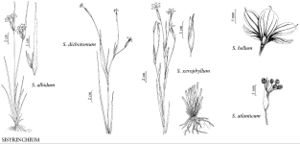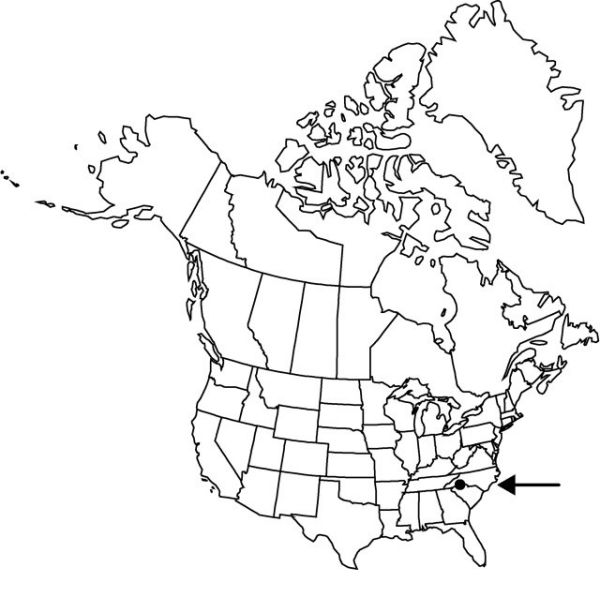Sisyrinchium dichotomum
Bull. Torrey Bot. Club 26: 609. 1899.
Herbs, perennial, cespitose, yellowish green to light green or dark olive when dry, to 4 dm, not glaucous. Stems branched, with 2–5 nodes, 2.6–3.5 mm wide, glabrous, margins minutely denticulate near nodes, similar in color and texture to stem body; first internode 6–12 cm, shorter than leaves; distalmost node with 2 branches. Leaf-blades glabrous, bases not persistent in fibrous tufts. Inflorescences borne singly; spathes sometimes with purplish tinge, ± equaling supporting branch in width, glabrous, keels slightly denticulate; outer 14–21.5 mm, 3.3–5.3 mm longer than inner, tapering evenly towards apex, margins basally connate 2–3.4 mm; inner with keel straight, hyaline margins to 0.1 mm wide, apex acute to acuminate, ending 0.7–1.7 mm proximal to green apex. Flowers: tepals white, bases yellow; outer tepals 3.3–7.5 mm, apex apparently rounded, aristate; filaments connate ± entirely, glabrous; ovary similar in color to foliage. Capsules pale to medium brown, ± globose, 2.1–3.4 mm; pedicel erect. Seeds globose, lacking obvious depression, 1–3 mm, rugulose. 2n = 32.
Phenology: Flowering summer.
Habitat: Dry to moist oak-hickory woods and edges
Elevation: 400–1000 m
Discussion
Of conservation concern.
Sisyrinchium dichotomum is endemic to the Piedmont-Blue Ridge escarpment of the Carolinas, known from only seven populations according to the U.S. Fish and Wildlife Service. The fertility and fecundity of this species are very low. In an average individual, only 63 percent of the pollen is viable, and mature capsules typically have only 1 or 2 seeds (K. L. Hornberger 1987).
Selected References
None.

